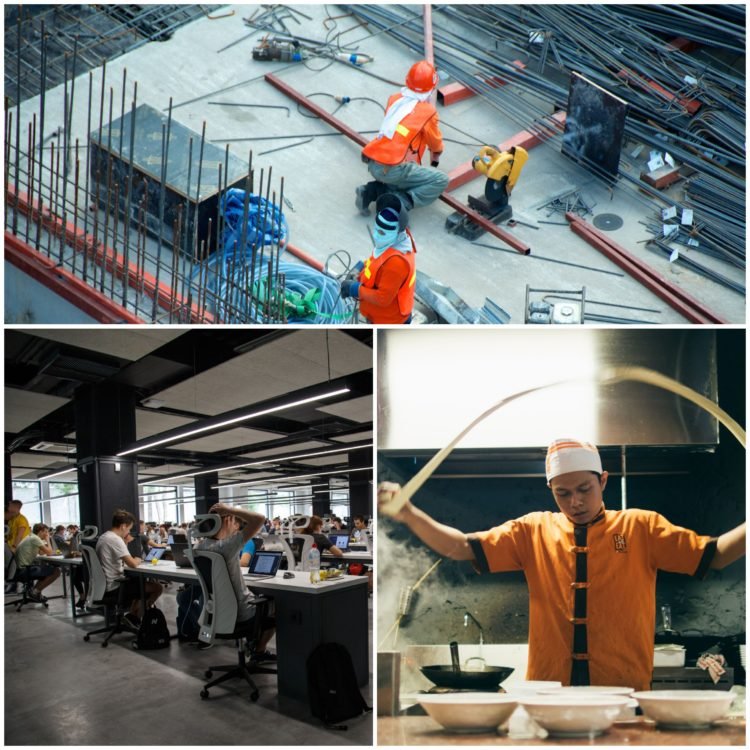What Is It?
The H-1B nonimmigrant visa allows United States employers to hire qualified nonimmigrant aliens to work temporarily in a specialty occupation. The past several years, For the FY 2019, USCIS received 190,098 petitions.
How to Qualify
To qualify for an H-1B visa, a foreign worker has to meet the criteria laid out below:
- Specialty Occupation: The position must qualify as a “specialty occupation,” which is one that demonstrates knowledge in a specific specialty attained through a U.S. bachelor’s degree (or equivalent to a U.S. bachelor’s degree) or higher. Examples of specialty occupations include, but are not limited to, scientists and engineers.
- Degree: The minimum degree requirement is a bachelor’s degree. The degree must be equivalent to the minimum requirements for the position, it must be common to similar occupations in the same field of work or industry, and the employer usually requires a such a degree or higher degree for the position. One will have to show proof of a United States bachelor’s degree, a foreign degree deemed equivalent to a United States bachelor’s or higher.
- Must Be Sponsored by an Employer: A foreign worker must be sponsored, or petitioned, by a specific company in order to qualify because the employers are required by USCIS to file the petition for the visa on behalf of the foreign worker. Because H-1B’s are job specific and employer specific, any change in employment requires a new H-1B petition.
Length of an H-1B
The length of an H-1B is three years but can be extended to six years, which would require another filing of an H-1B petition. If an H-1B holder would like to continue to work in the United States after six years, they must leave and remain outside the United States for a year before they are eligible to apply for another H-1B visa. However, in some scenarios, the H-1B holder may be able to extend his/her status beyond the six years, while remaining in the U.S., if he/she has an approved I-140 petition (more on this in another post).
Process
- The employer files a Labor Condition Application (LCA) for the worker which includes the wage, working conditions, and job duties. It is important to show the wage is at least equal to the standard wage (prevailing wage) for the occupation within that area of employment that has the same qualifications. For example, if the position is for an accountant in Los Angeles, CA, the wage has to match what the typical wage is in that area for that job, which wouldn’t be the same for the same job in Pocatello, ID. The LCA is filed through the U.S. Department of Labor. One of the purposes of the LCA is to ensure the wage paid to the foreign worker meets or exceeds the minimum wage for the specific occupation of the H-1B worker in the geographic area where he/she will work. The LCA is kept on file and is public record.
- Once the LCA is approved, the employer files a Petition for a Nonimmigrant Worker (Form I-129) requesting H-1B status. It is filed through U.S. Citizenship and Immigration Services (USCIS) with supporting documents. Generally speaking, H-1B petitions are filed on April 1st of each year with a start date of no earlier than October 1st of the same year. The start date cannot be any sooner than that for a typical H-1B case (there are certain cases where an H-1B can be filed at other times during the year with a different start date). If there are too many petitions received, which has been the case these last few years, USCIS holds a lottery to randomly pick cases it will process.
- After the I-129 Application is approved, the foreign worker may begin working the United States at the indicated start date listed on the LCA. If the worker is not present in the U.S. at the time of approval, the worker can use the approved I-129 Form at a United States port to gain entry.
What is the Lottery?
These last several years, USCIS has received many more petitions than they have visas available, and it’s likely to continue this way. There is a limit of 65,000 H-1B visas issued per year. For those who have a U.S. master’s degree or higher, there are 20,000 additional visas. When USCIS receives more petitions than the allotted amount, they hold a lottery to determine which petitions they will process. This is a completely random process. First, a lottery is held for the 20,000 cap for those with advanced degrees. Then, a second lottery is held for the additional 65,000 petitions. If an advanced degree petition was not selected through the lottery, it will be entered into the general lottery for a second chance to be chosen among the 65,000. Petitions not chosen or approved the application materials and fees are sent back to the employer.
Cap-Exempt Employers
Although there is a limit on the number of visas issued, exemptions and some international trade agreements have made it possible to issue many more H-1B visas than allotted. There are some institutions that are exempt from the cap.
There are three categories which are cap-exempt: universities, government research facilities, and non-profit research facilities. They may hire as many foreign workers as they wish, and the H-1B petition can be filed at any time throughout the year. An example would be a dual immersion language elementary school teacher, assuming that the school district meets the requirements to be cap-exempt. In 2017, there were about 197,000 H-1B visas issued due to the cap-exempt exception.
Protections
There are several rules that protect foreign workers with H-1B status. Like stated above, there has to be proof the worker receives a fair rate within the area of employment. If the foreign worker is terminated, the employer should send a letter to USCIS of the termination and to withdraw the H-1B petition that was filed on behalf of the worker. The employer should also pay for the H-1B worker’s travel costs to go back to his/her home country.
Recent Developments
It’s no secret that there has been a lot of talk surrounding immigration, such as changes in policies and the overall sentiment and attitudes toward immigration. With the current administration’s “hire American, buy American,” slogan, H-1Bs have been subject to more scrutiny. For example, we have seen an increase in Request for Evidence (RFE) letters from USCIS for cases that likely would have never received RFEs before. RFE letters are letters issued by USCIS asking the petitioner/applicants for more evidence and information to show that they are eligible for the immigration benefit they are applying for. In addition, more in-person work site visits have been made to ensure that employers abiding by the rules of the H-1B, and specialty occupations for jobs like software engineers are being highly scrutinized and questioned by USCIS if a four-year bachelor’s degree is necessary for these types of occupations. We have also seen USCIS dispute the prevailing wages that the employer would be paying the H-1B employee, stating the employer must pay more even though the strategy used to determine that prevailing wage is one that has been used in the past with no issues.
This is not meant to deter anyone from applying for the H-1B because it is still certainly a viable option. I recently had an H-1B approved for a dual immersion language teacher for an elementary school, which was considered a cap-exempt H-1B (meaning it was not subject to the numerical limitation of the 65,000) with no issues and no RFE letter. This post is meant to provide more information about possible hurdles you may face.



